Introduction to IEC or IEC60320 connectors
Actually IEC connectors, or Electrotechnical Equipment Connectors, are a series of international standards that specify the connectors used in electrical and electronic equipment. These connectors are designed to provide a secure and reliable connection between devices, as well as to facilitate interoperability between different equipment.
One of the most common IEC connectors is the IEC 60320 connector, used for connecting electrical devices such as computers, household appliances, and office equipment. This connector is designed to be safe and easy to use, with a design that prevents incorrect connections and reduces the risk of short circuits.
In this specification, two components are distinguished: the "connector", which includes the power supply connectors, and the "input", which includes the plug panels.
These connectors are usually identified in pairs, where the connector (tubular metal contact or "female") is named with an odd number, while the input (cylindrical metal contact or "male") is designated with the corresponding even number. For example, a cable with a C1 connector connects to a C2 chassis socket, and one with a C15A connector connects to a C16A. Most of these connectors are polarized, although they can be used with non-polarized outlets. Exceptions include C1, some C7, and all C9. All connectors have a voltage limit of 250 volts (V) alternating current (AC), with a maximum operating temperature of 70°C, unless otherwise specified.
When mentioned without additional qualifiers, "IEC connector" generally refers to the C13 and C14 connectors.
There are some types that are available as both cable connectors and panel connectors for use as extensions, although they are less common. These include two- and three-conductor connectors with different capacities and operating temperature ranges, all designed to connect equipment to a home electrical network using a power cord. This allows equipment manufacturers to easily change power cables to adapt to power grids in different regions of the world, as long as the equipment can operate on 120V or 240V power grids, and 50 or 60 Hertz (Hz).
Additionally, these connectors are classified according to their electrical insulation class, which can be:
Class 0: without grounding and with a single level of insulation.
Class I: with the chassis connected to the ground.
Class II: with double electrical insulation, without the need for grounding.
Class III: Designed to be powered from a SELV (Separated or safety Extra-Low Voltage) power supply.
IEC connectors are used in a variety of applications, such as in the broadcasting industry, computer equipment, electronic laboratory and in medical equipment, among others. These connectors are designed to meet the safety and performance standards required for these specific applications, ensuring equipment operates reliably and safely at all times.
In addition to their primary function of providing an electrical connection, IEC connectors can also include additional features such as surge protection, electromagnetic interference filters, and locking mechanisms to prevent accidental disconnections.
In summary, IEC connectors play a vital role in the safe connection and operation of a wide range of electrical and electronic equipment. Their robust design and international standards ensure a high level of reliability and compatibility between devices, making them a popular choice in a variety of industrial and commercial applications.
IEC60320 C1 and C2 connectors
IEC connectors C1 and C2 are examples of non-polarized connectors that consist of two pins. They have a maximum current of 0.2 Amperes (A) and are commonly used in electric shavers.
| C1 connector (usually on the cable) |
C2 connector (input) |
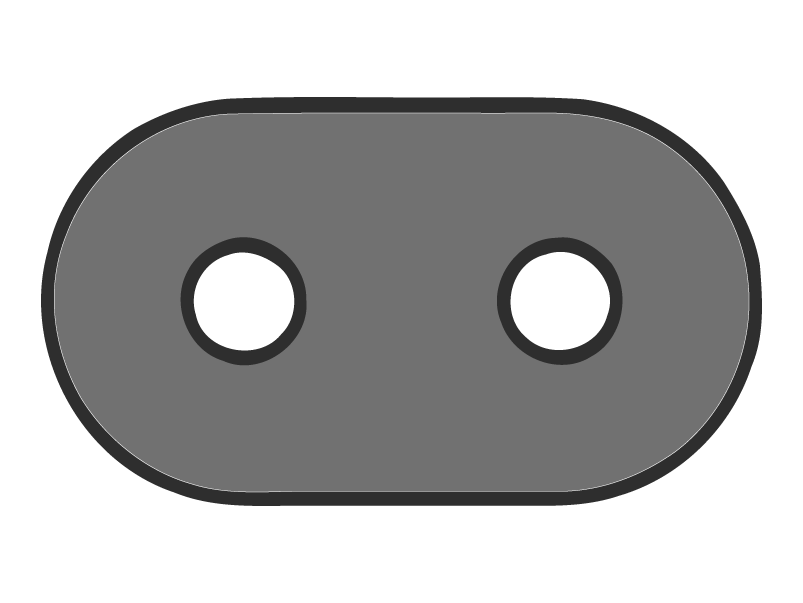 |
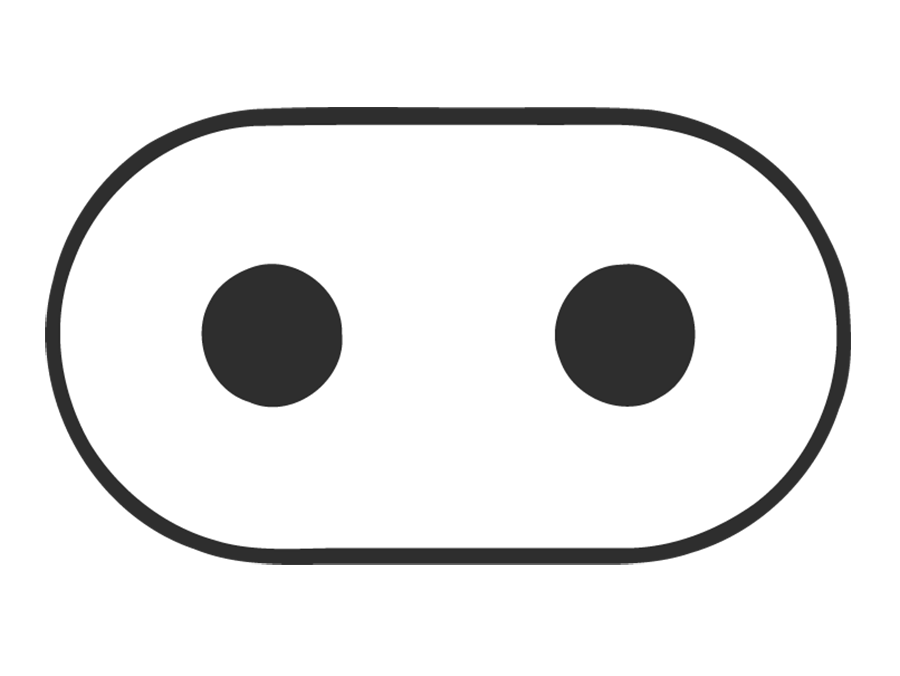 |
IEC60320 C3 and C4 connectors
IEC connectors C3 and C4 were two-prong polarized connectors. They were similar to the C5/C6 connectors, with the exception of a notch that served as a guide to indicate the correct orientation. However, these connectors were removed from the standard.
IEC60320 C5 and C6 connectors
The IEC C5 and C6 connectors are known colloquially as "Mickey Mouse" because their cross section resembles the silhouette of the famous Disney character, or also as "Clover Leaf". These 3-prong, 2.5 amp connectors are used on some laptop and portable projector power supplies.
| C5 connector (usually on the cable) |
C6 connector(input) |
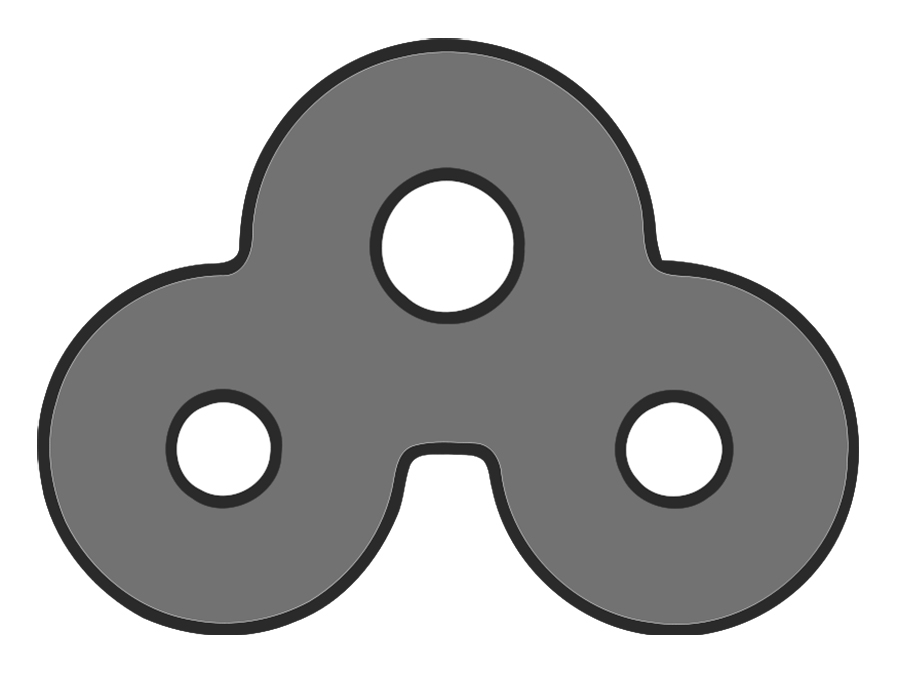 |
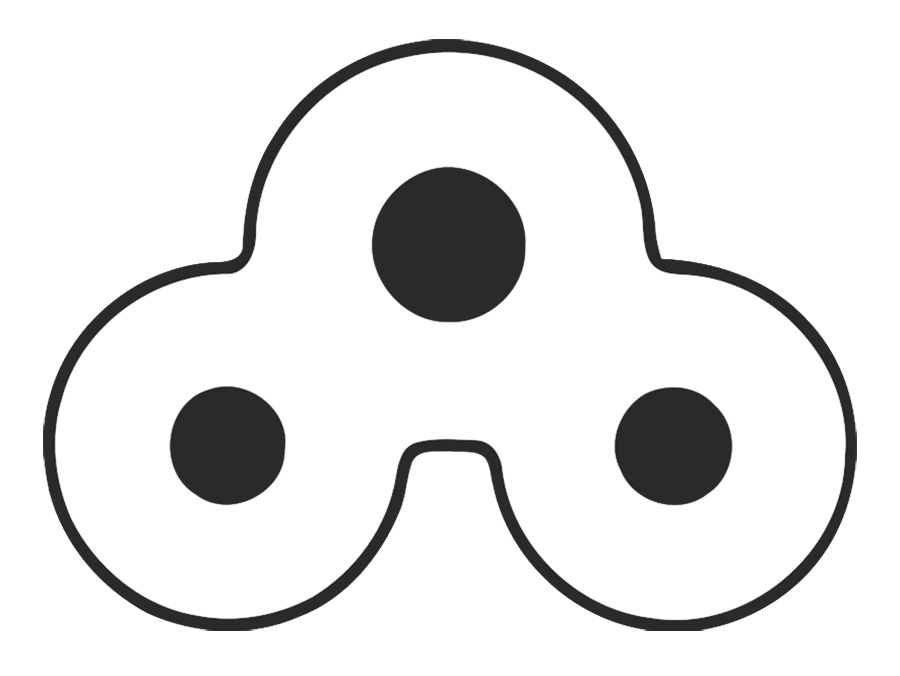 |
IEC60320 C7 and C8 connectors
The IEC C7 and C8 connectors, consisting of two 2.5 A pins, are available in polarized and non-polarized versions. The "non-polarized C7 and C8 connector", commonly known as "figure 8" or "shotgun", is frequently used on cassette decks and mains or battery powered radios.
On the other hand, the "polarized C7 and C8 connector" is asymmetrical, with one end rounded similar to the non-polarized version and the other square. This type is used in full-size AV equipment and power supplies for laptops, game consoles, and similar equipment.
Importantly, "C7 non-polarized" cables can be used with equipment that has a "C8 polarized connector."
| C7 connector (usually on the cable) |
C8 connector (entrada) |
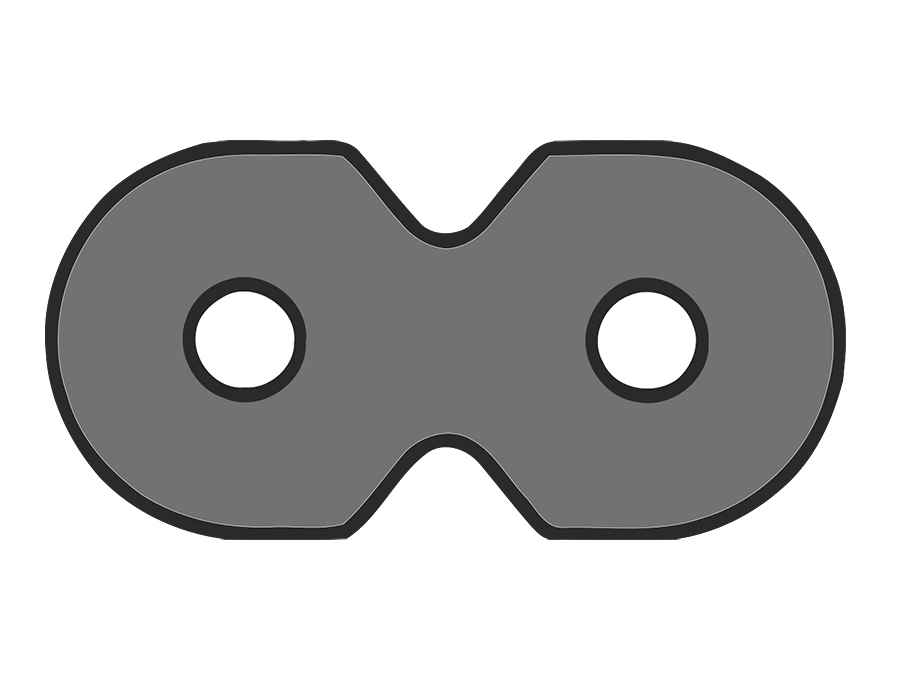 |
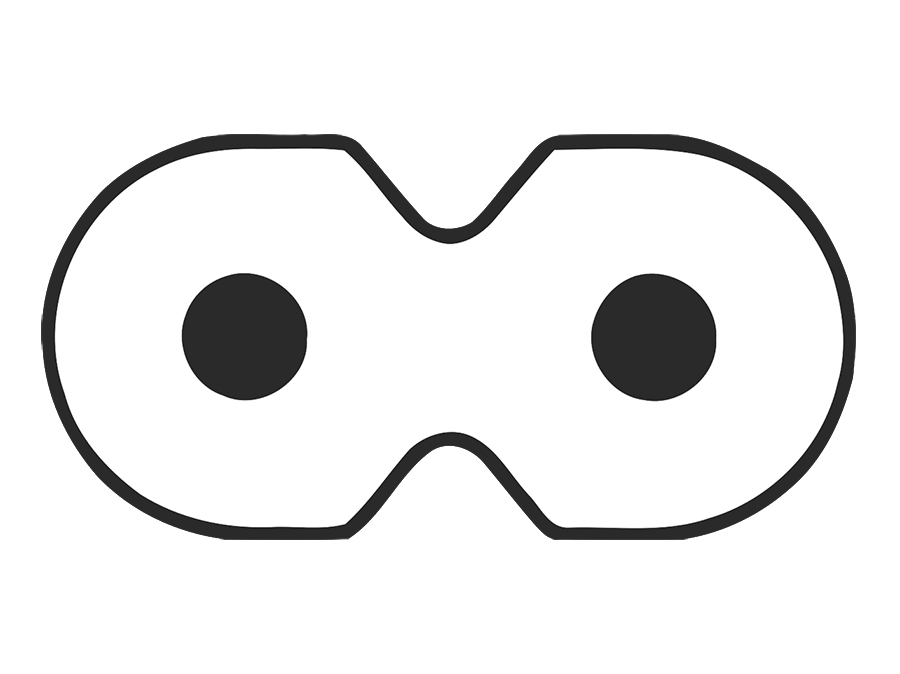 |
IEC60320 C9 and C10 connectors
IEC C9 and C10 connectors are rectangular and non-polarized connectors. They usually have a current capacity of the order of 6 amperes (6A).
| C9 connector (usually on the cable) |
C10 connector (input) |
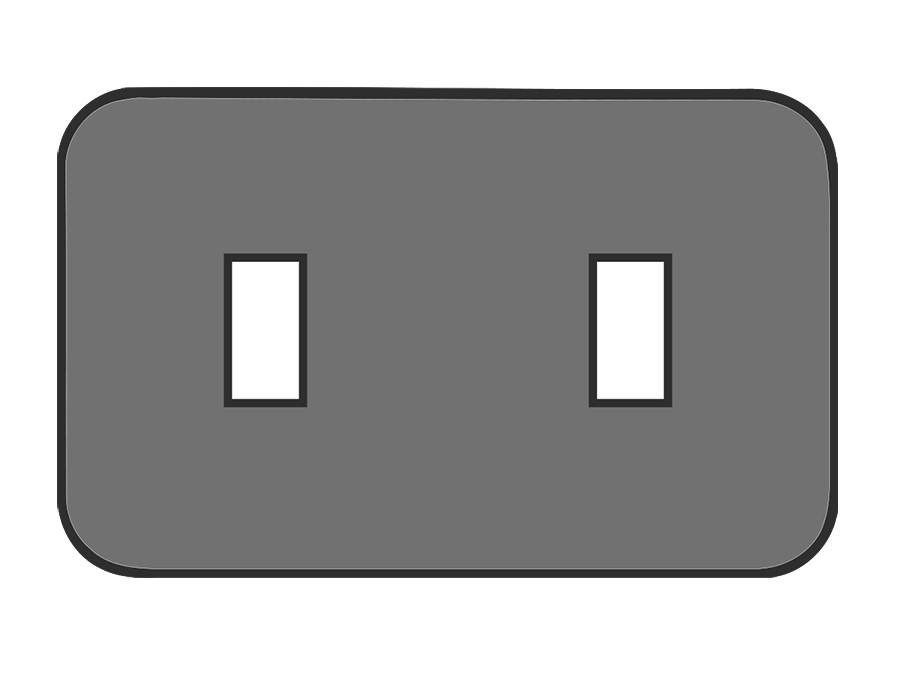 |
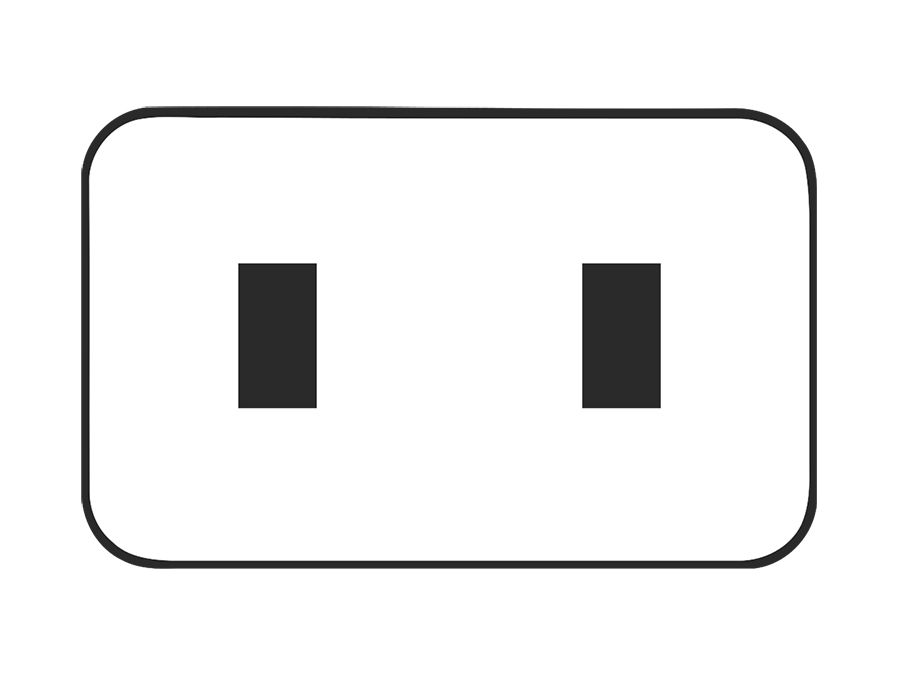 |
IEC60320 C11 and C12 connectors
IEC C11 and C12 connectors are identical to IEC C9 and C10, except for a rectangular notch in the upper area. The supported current is usually 10A.
IEC60320 C13 and C14 connectors
IEC C13 and C14 connectors are known as polarized connectors with three rectangular terminals that typically support 10 amps (10A). They have dimensions of 2.7 x 5.5 mm and are 22.78 mm wide at the base and 15.6 mm high. At the top of the top connector, there is a bezel that forms a 90-degree angle and leaves a 10.9mm wide top plateau. They are commonly known as "IEC cables."
These connectors are widely used in personal computers, monitors, printers, peripherals and electronic equipment such as amplifiers and professional sound equipment. The surface-mounted C14 inlet is used to connect the power cable (typically a cable with a C13 and Schuko connector or NEMA 5 or NEMA 5-15p connector) to the power supply.
Cables that have IEC C14 and C13 connectors on both ends are readily available and usually lack fuses. They are used for various purposes, including connecting power between compatible computers and their monitors, extending power cables, connecting to C13 connection strips in rack mounts for space saving and international standardization, and connecting computing equipment to the output of an uninterruptible power supply (UPS).
| C13 connector |
C14 connector |
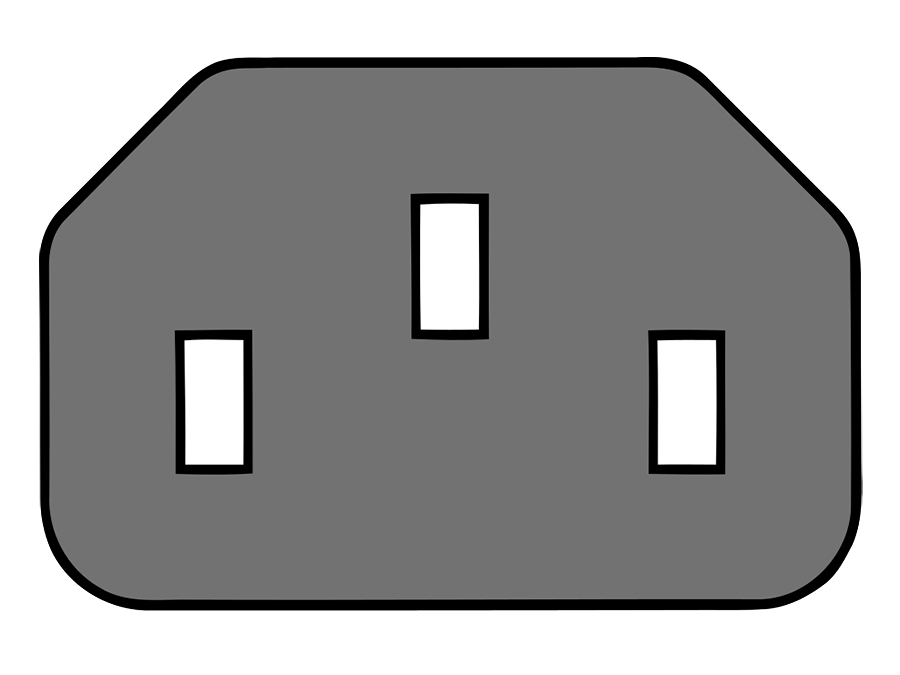 |
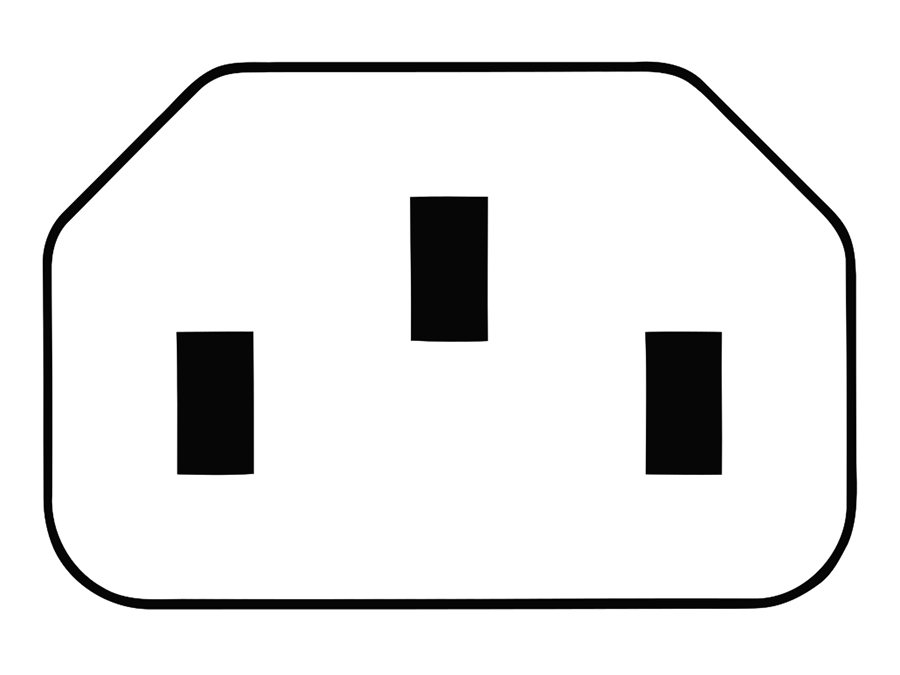 |
IEC60320 C15 and C16 connectors
IEC C15 and C16 connectors are 10 amp (10A) three-prong polarized connectors. There are two variants available:
The C15 connector, which has a maximum temperature of 120°C.
The C15A connector, which has a maximum temperature of 155°C.
Some small appliances, such as electric jugs, that reach high temperatures use a cable with a C15 connector that connects to a C16 input on the appliance. The maximum temperature of these connectors extends to 120 degrees Celsius (120°C) instead of the 70°C of the C13/C14 combination. In Europe, C15 and C16 connectors are officially designated as "high temperature" connectors.
These connectors are almost identical in shape to connectors C13 and C14, except for a ridge under the ground of C16 (to prevent the connection of a C13 wire) and the corresponding gap in connector C15 (which does not prevent connect a C15 cable into a C14 connector). For example, an electric jug cord can be used to power a computer, but a computer cord cannot be used to power a jug.
Revision A, which withstands up to 155°C, truncates the top bezel of the C13/C15 in half and features a central ridge above the ground connection. Like the above, a C15A cable can be used in C16 and C14 sockets, but C13/C15 cannot be physically plugged into a C16A input.
Many people are not aware of the subtle differences between the C13/C14 and C15/C16 connector pairs, and refer to the latter as "kettle plug" and "kettle lead" (in the UK) and "jug plug" (in Australia).
In the UK, the C15 and C16 connectors have replaced and made the appliance plug obsolete in most uses.
| C15 connector |
C16 connector |
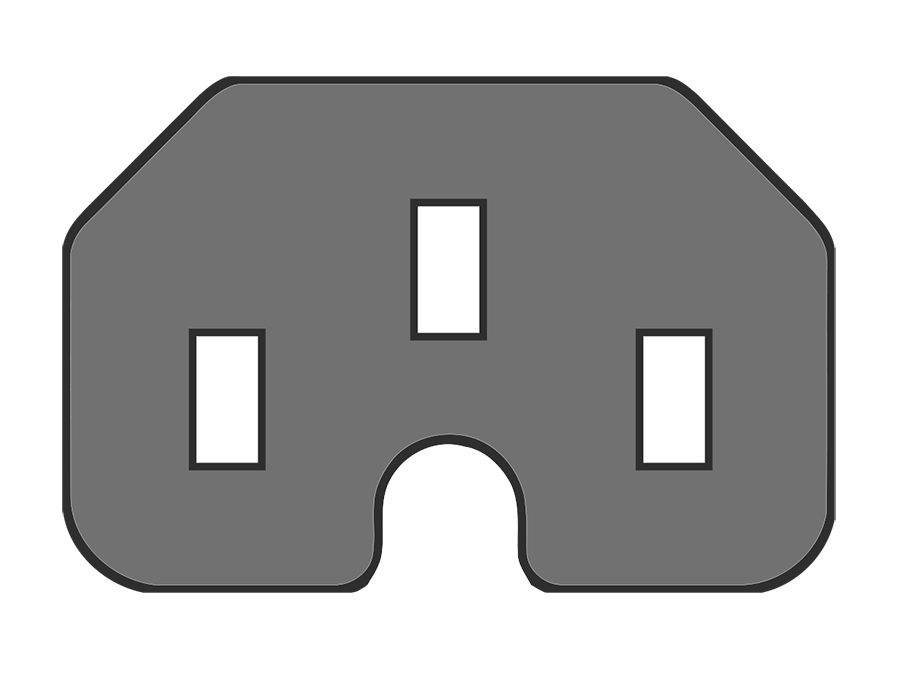 |
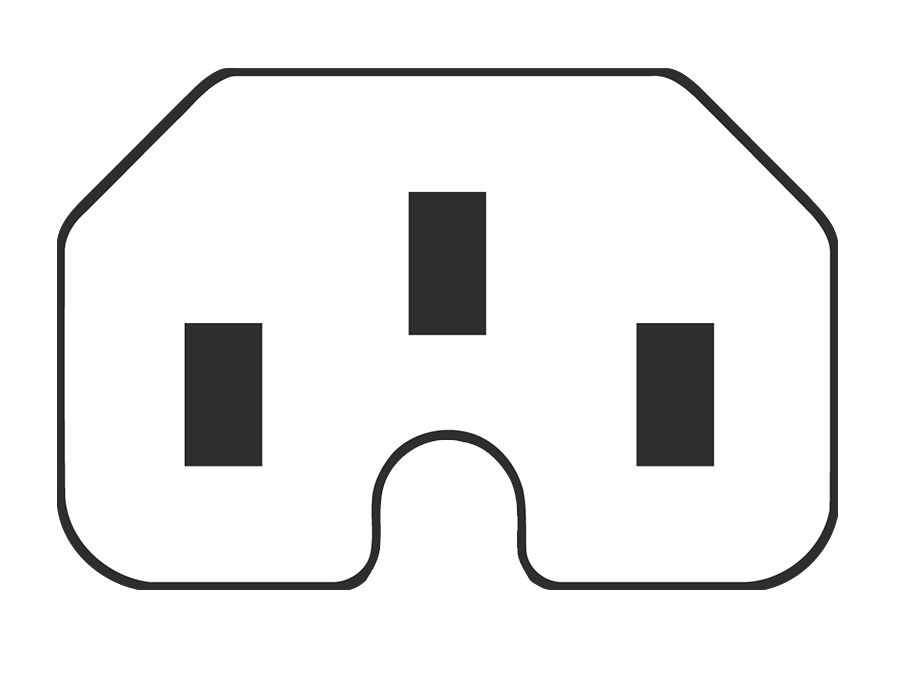 |
IEC60320 C17 and C18 connectors
IEC C17 and C18 connectors are polarized connectors with two 10 amp (10A) pins. Although similar to the C13/C14 connectors, the C17 and C18 do not have a third grounding pin. A C18 input can accept a C13 cable, but a C14 input cannot accept a C17 cable.
Often three-wire C13 cables are used instead of two-wire C17 cables as they are much easier to obtain. In these cases, the ground wire is not connected.
A common application of the C17 and C18 connectors is in the IBM Wheelwriter series of electric typewriters.
Another common application is in the power supplies of Xbox 360 game consoles, instead of the C15/C16 connectors initially used.
| C17 connector |
C18 connector |
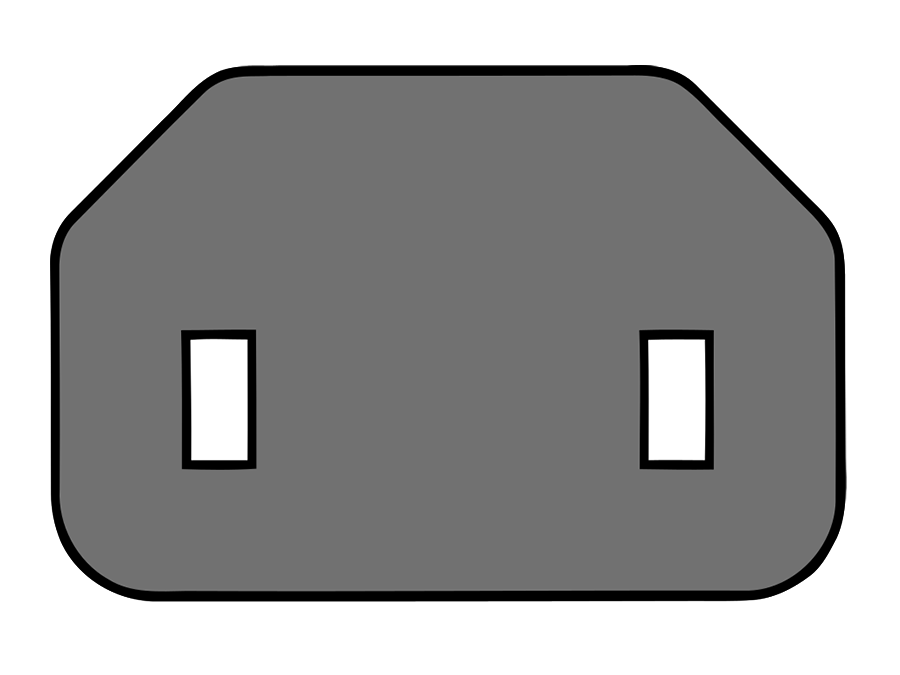 |
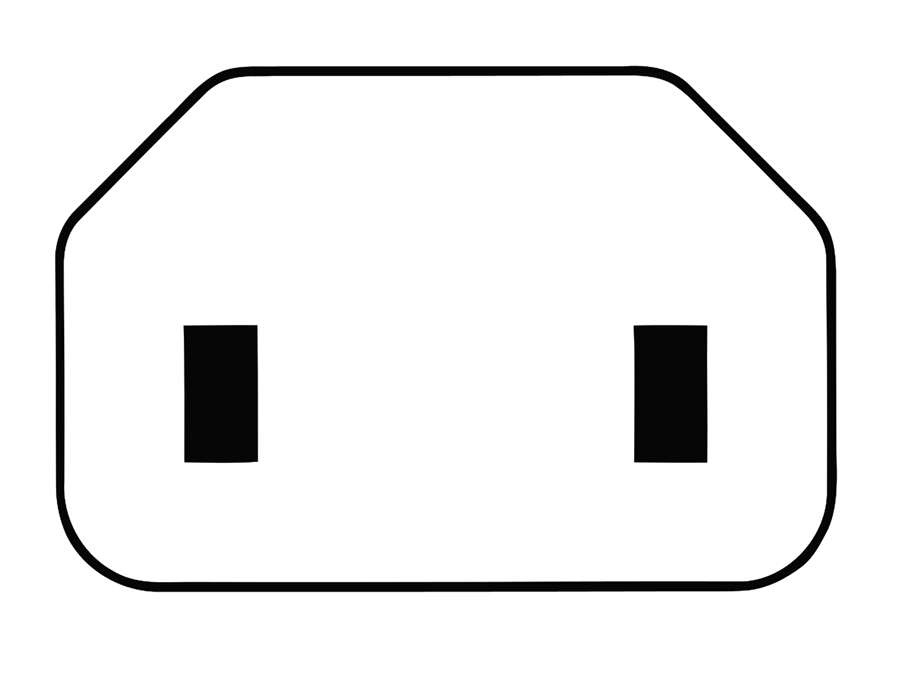 |
IEC60320 C19 and C20 connectors
IEC C19 and C20 connectors are 16 amp (16A) three-prong polarized connectors. Although similar to the C13 and C14 connectors, the C19 and C20 are rectangular (no beveled corners) and the pins are slightly larger, rotated so that they are parallel to the longitudinal axis of the connector.
These connectors are used in some server room applications where high currents are required. For example, they are found in high-performance servers, uninterruptible power supplies (UPS), power distribution units (PDUs), and other similar equipment in data centers.
| C19 connector |
C20 connector |
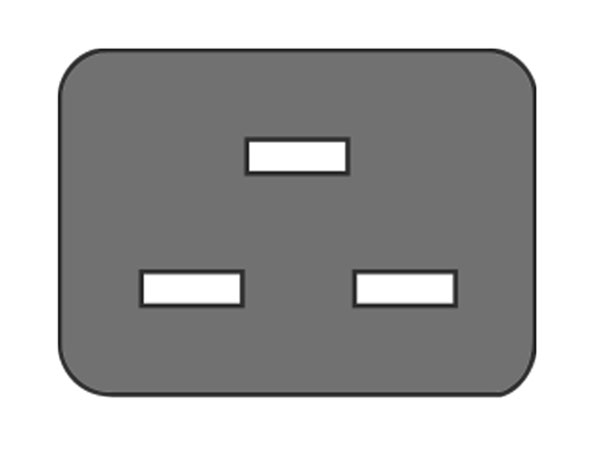 |
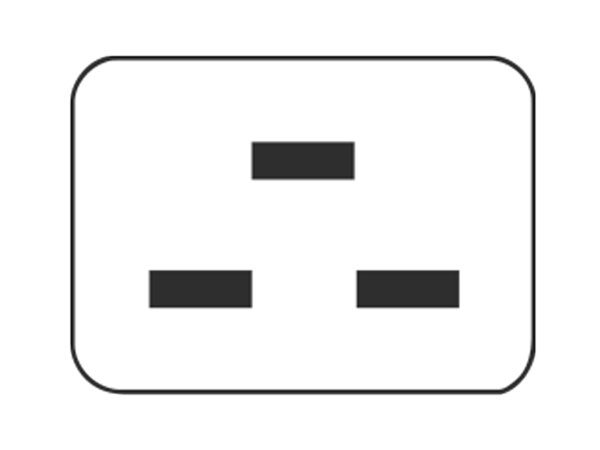 |
IEC60320 C21 and C22 connectors
IEC C21 and C22 connectors are 16 amp (16A) three-prong polarized connectors. They have the same pin layout as the C19/C20, but feature the beveled connector shape of the C13/C14.
These connectors have a maximum temperature of 155°C.
| C21 connector |
C22 connector |
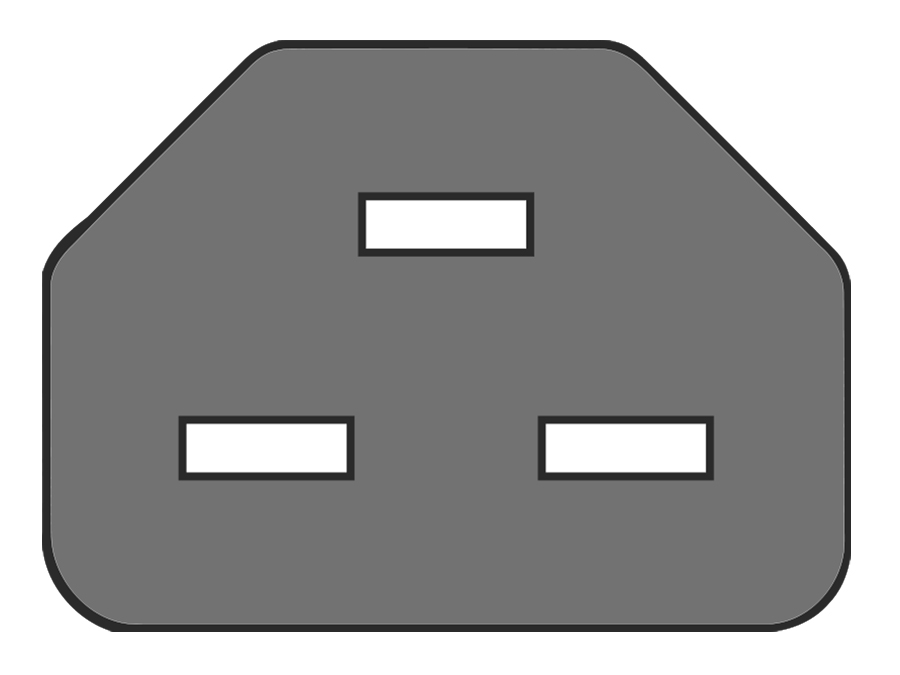 |
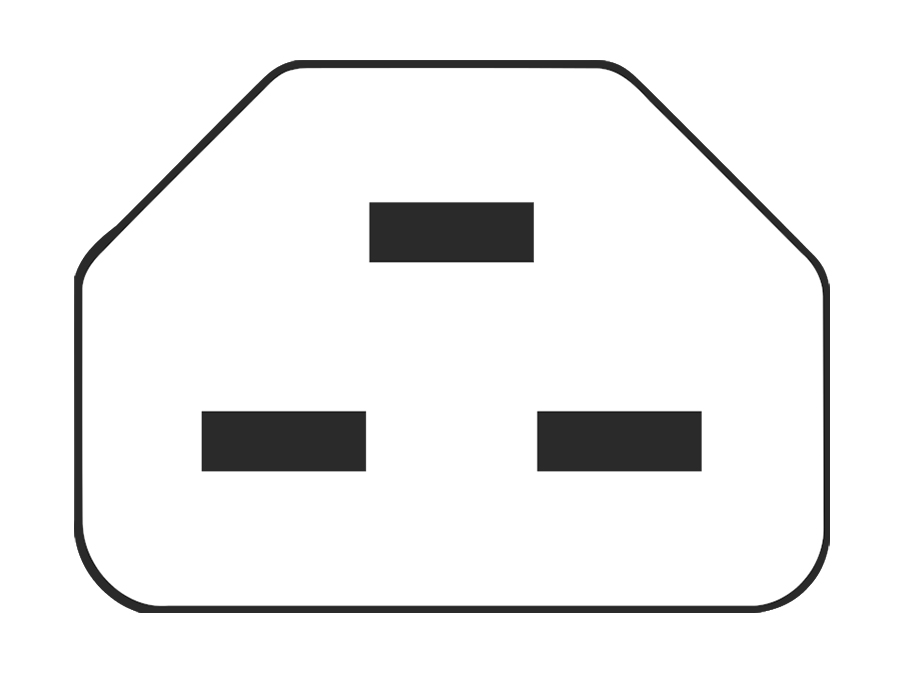 |
IEC60320 C23 and C24 connectors
IEC connectors C23 and C24 are similar to C19 and C20 respectively, except that they do not have a ground connection.
| C23 connector |
C24 connector |
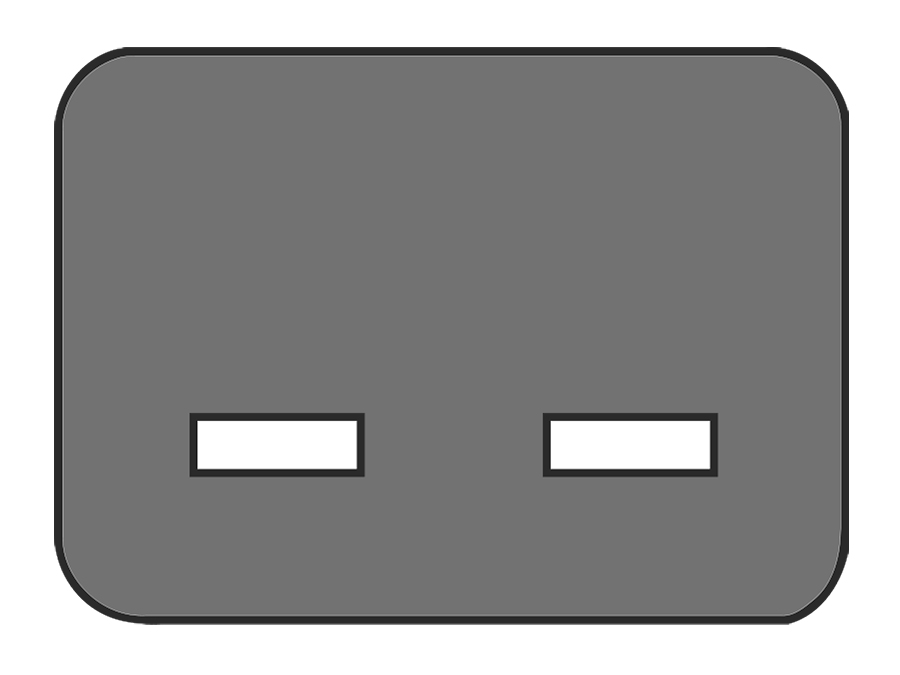 |
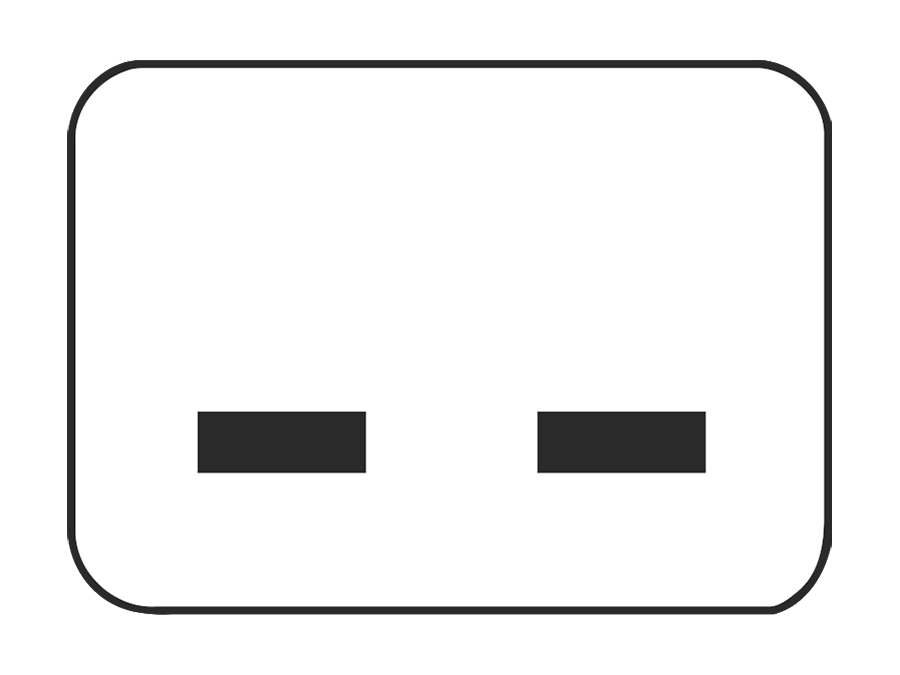 |
